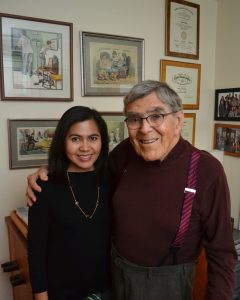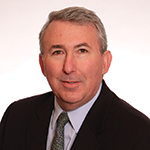Editor’s note: We are sad to report that Dr. Kaplan passed away on Saturday, June 23. We are reposting this story now to celebrate his life. Read his obituary.
In a growing specialty that is still largely underserved, there is always a spark of excitement and an unspoken sense of camaraderie when one rheumatologist meets another in the most unexpected places. I met Herbert Kaplan, MD, during a trip to Massachusetts to see my parents-in-law at the retirement community they had just moved into. Both retired physicians, they were eager to share the news that their newfound friend in the building happened to be a rheumatologist like me and was a past president of the ACR.
I vaguely recognized the name, but I didn’t know much about Dr. Kaplan. I was just in my last year of medical school when he was ACR president (1993–94). I decided to make it a point to sit down and chat with Dr. Kaplan whenever I was in town, and I exchanged occasional emails with him. The more I got to know Dr. Kaplan, the more I felt compelled to share the story of how I met him with not just a few colleagues, but to make sure this and future generations of rheumatologists know about Dr. Kaplan’s contributions to the advancement of our specialty.
I asked Dr. Kaplan for a formal interview about his life, which he gladly obliged. I was like Marty McFly in Back to the Future, with an accidental chance to see the life of my version of Doc Brown. In the end, I learned so much about the history and the future of rheumatology.
Dr. Kaplan’s Early Career
Born in New York in 1929, the son of a high school math teacher and a mother who stayed home to care for three children, Dr. Kaplan was the first in his family to become a doctor, obtaining his MD from Albany Medical College in 1955. I asked him why he chose to go into medicine.
“I really liked my high school biology teacher, Mr. Nathans,” was his quick reply.
But why did he choose rheumatology, which was not an established specialty around that time?
It all began in Germany. Dr. Kaplan went into the U.S. Army after completing his internal medicine residency at Duke University and Yale New Haven Hospital. He was working at the army hospital in Munich when he took care of 15 U.S. soldiers, all African American, who had sarcoidosis, acute arthritis and elevated uric acid levels. He decided to treat them with colchicine, mainly because they had elevated uric acid levels. Surprisingly, they all got better. As far as he knows, it was the first time colchicine was used for anything other than gout.



